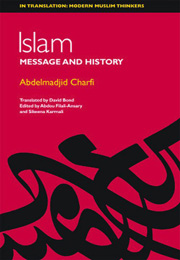3 - Distinctive Characteristics of Muhammad's Message
from Part One - Characteristics of the Message of Muhammad
Published online by Cambridge University Press: 12 September 2012
Summary
Before studying the outcome of the preaching of Muhammad's message, it is initially worth examining a number of ways in which it has been interpreted, rectifying these interpretations and putting them in their correct context.
A religion, whatever its nature, cannot be reduced to its simple historical manifestation. However, that does not mean that it cannot be studied from an historical viewpoint. A distinction can be made between “open” and “closed” religion, to use the Bergsonian classification, between the initial preaching and the forms of religiosity in which ritual plays an important part and fulfils various social functions designed to reinforce the bonds between individuals and impose a minimum of discipline. Social allegiances and solidarities have primacy over the truth, and priority is given to group cohesion rather than to the demands of individual conscience. It is in this context that one may reconsider the nature of the Prophet's message, cutting through confusion and obfuscation, using terms according to their original meaning and not that which they acquired over time due to various outside influences.
The first point to be underlined is the oral nature of the Prophet's discourse. Unlike those who were Companions of the Prophet for varying periods of time and who listened to him, neither present-day Muslims nor the generations who came after the “Followers” possess a direct knowledge of the specificities of this discourse, the precise circumstances surrounding it, the individual or individuals concerned, the aims of this discourse, or to other questions relating to each verse, group of verses, or sūras (chapters) of the Qur'an.
- Type
- Chapter
- Information
- IslamBetween Message and History, pp. 49 - 58Publisher: Edinburgh University PressPrint publication year: 2009



